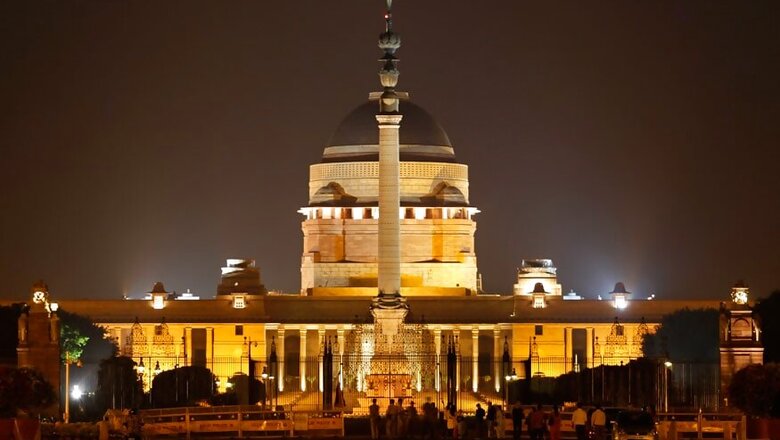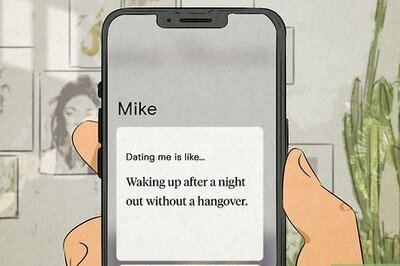
views
In six weeks from now, India will have a new First Citizen. A look back at history would paint an interesting picture of how Presidents have been elected in the world's largest democracy.
It takes us back to 1969 when, for the very first time (and so far the only time), an official candidate of the ruling Congress party was defeated. Sanjiva Reddy had lost to VV Giri in 1969, only to be unanimously elected to Rashtrapati Bhawan from 1977 to 1982. But the 1969 election also saw a split in the ruling party, with Indira Gandhi challenging those who held critical positions in the party organization and charting an independent course.
This time around too, all indications point to a formal contest between the nominees of the BJP-led NDA and the Opposition. Though the BJP Committee has initiated discussions with the opposition parties, it appears to be more of a formality rather than a serious effort to arrive at a consensus.
The position of the President in India has been more of an office of influence rather than one of power. Beyond a shadow of doubt, the influence of the position largely depended on the persona of the occupant, than the nature of party politics. Many distinguished holders of the position brought glory to the office and would be remembered for the manner in which they discharged their responsibilities with sagacity, impartiality and a sense of fairness. Their Presidency was largely free of political controversies and they took many a fair decision. They are remembered not because they became Presidents but because the Office of the President was elevated to a higher level on account of these distinguished statesmen occupying the exalted position. The present incumbent, Pranab Mukherjee would surely be the most recent and celebrated addition this list which would include APJ Abdul Kalam, K.R.Narayanan, R.Venkatraman, Zakir Hussain, S.Radhakrishnan and the first President Rajendra Prasad. One hopes that the one who becomes our first Citizen next month would join this celebrated list.
At the current juncture in Indian politics when one hears the voice of divisiveness, exclusion, rhetoric and partisanship being the loudest, the Presidency can be a voice of sagacious wisdom and counsel. While the BJP would be very keen to install in the high office an individual who represents their line of thinking, it is also hoped that whoever rises to this top position would rise above party politics and exemplify the much needed national consensus and reconciliation.
On the earlier occasion when the NDA was in power and a President had to be elected (in 2002), the then Prime Minister Atal Bihari Vajpayee sprang a surprise by announcing APJ Abdul Kalam's name. Though Kalam had to face a formal contest, he did not merely get the backing of the BJP-led NDA, but also secured the support of a few other political parties. One hopes the present leadership would also promote the candidature of an individual of eminence who would be in a position to win support across party lines.
It is important to return to a theme mentioned at the start of this essay. In a Parliamentary form of government, the Presidency is essentially about influence and not power. Even during the days of one-party domination, some of our Presidents did have serious differences with their Prime Ministers though these differences were rarely openly stated in public. Rajendra Prasad had his moments of disagreement with Jawaharlal Nehru and he did indirectly raise the issues of the President's role in a speech before the Indian Law Institute. Radhakrishnan is believed to have differed with Nehru on the handling of the China war. Zakir Hussain's Presidency was too brief to merit a detailed analysis. Sanjiva Reddy was not considered the first choice of Prime Minister Morarji Desai and the differences between the two during Reddy's Presidency were clearly visible. Venkatramam became the President during the days of transition to a multi-party competitive system. It was during his Presidency that the 1989 Lok Sabha election was held and no party secured a majority and Venkatraman presided over the crucial years between 1989 and 1991. When the BJP emerged as the single largest party in the Lok Sabah elections of 1996, Shankar Dayal Sharma was the President who decided to continue with conventions followed by Venkatraman to invite the leader of the single largest party to form the government when no party secures a clearly majority. Later, in 1998, a new President K R Narayanan would rework the convention (in the light of the 13-day Vajpayee led government in 1996 which was unable to prove its majority) and invite a leader to be Prime Minister only when he or she got a written assurance from parties and appeared to have a majority, at least on paper. This convention, it is argued, led to the Sonia Gandhi-led Congress not being able to explore the possibility of forming a government on the resignation of IK Gujral as Prime Minister in 1999.
India is entering a phase of more intensified inter-party competition and emergence of deeper divisions in society. In such a socio-political context, it is important that the new President of India be a symbol of national unity who is able to inspire confidence across the political spectrum and build bridges of unity and understanding based on consensus and mutual respect. One hopes that the decision that would be taken in the next few weeks would be a step in the right direction.
— Authoris Pro Vice-Chancellor of Jain University


















Comments
0 comment